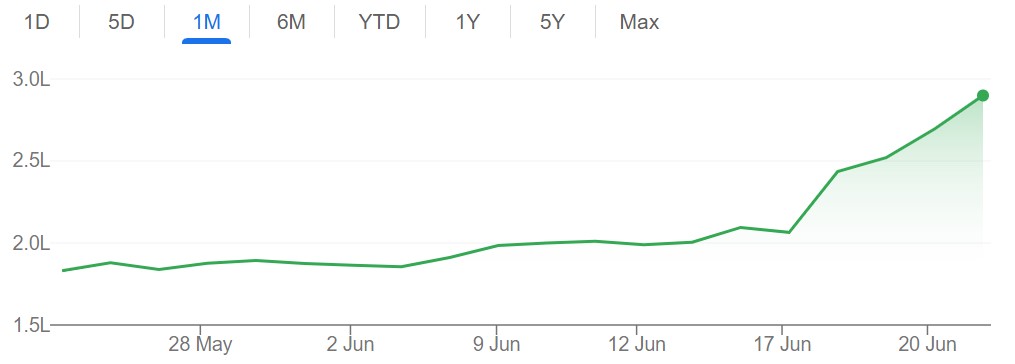South Korea’s Stablecoin Shift: A Game Changer for Financial Dynamics
As South Korea gears up for a significant pivot toward stablecoins, the implications for various sectors are gaining attention. This evolution could reshape the landscape of payment and finance in the country, offering massive opportunities alongside substantial challenges. On June 23, reports surfaced that lawmakers from the Democratic Party of Korea are preparing to introduce the Digital Asset Innovation Act, which could redefine how stablecoins operate within the nation. But what does this mean for companies, particularly in the finance and tech industries?

Stablecoins and Their Impact: Threat or Opportunity?
The Digital Asset Innovation Act is poised to redefine stablecoins as “value-stable digital assets,” placing a hefty requirement on potential issuers to maintain a minimum capital of 1 billion won (approximately $720,258). While this initiative could usher in a new era for transactions and payments in South Korea, the Bank of Korea has voiced concerns over potential risks to the traditional banking sector. With stablecoins facilitating payments independently of fiat currency, credit card providers may have cause for alarm. Indeed, industry experts warn that a decline in transaction volumes could lead to a “structural crisis,” making it increasingly challenging for these firms to guarantee profitability.
Despite these concerns, some within the credit industry remain optimistic. An anonymous employee from a card provider noted the unique ability of credit offerings to maintain a competitive edge: “It’s tough to foresee how stablecoins will impact our profitability, but our capacity to extend credit is something they can’t easily replicate.” Yet, there is an undeniable tension as traditional credit products face looming defaults; recent statistics show the average monthly default rate for South Korean credit cards reached 1.93% in the first quarter, approaching the critical 2% threshold deemed hazardous for the market.
🇰🇷 The Bank of Korea, South Korea’s central bank, is still lukewarm on proposals to launch a won stablecoin despite a recent meeting with the USD Coin (USDC) issuer Circle.#SouthKorea #Stablecoins #USDChttps://t.co/qPwbqgvtFg— Cryptonews.com (@cryptonews) June 19, 2025
Which Players Will Thrive in This New Eco-System?
While established card issuers wrestle with uncertainty, tech giants in South Korea are eagerly embracing the potential of stablecoins. Companies like Naver and Kakao, long-time innovators in the blockchain realm, are perhaps the biggest beneficiaries of this regulatory shift. Experts anticipate that with clearer guidelines from authorities, these IT behemoths could unlock new avenues for growth in digital assets.

As the buzz grows around a potential Naver stablecoin, the interplay between digital assets and web3 services could signal an intriguing growth phase for both Naver and its affiliated platform, Line. A collaboration or interoperability between these services might not just bolster domestic use but also expand their footprint in the international market.
#Hanwha Ocean ramps up push into U.S. Navy ship repair, eyes tech transfer via #Philly Shipyard. The Korean shipbuilder scales capacity at home with 1 trillion won investment and targets 2025 #MRO contracts. https://t.co/RI1nArBuuX— The Korea JoongAng Daily (@JoongAngDaily) June 23, 2025
Why This Matters: The Broader Implications for Finance and Tech
The stablecoin movement in South Korea is not just a legislative update; it represents a paradigm shift in how we think about money, transactions, and digital assets. As countries around the globe explore similar pathways, South Korea may very well set the standard for others to follow. The potential success or failure of this initiative may serve as a bellwether for the future role of traditional finance amidst the rise of digital currencies.
Future Outlook: What Lies Ahead for South Korean Markets?
With both opportunities and threats looming, the next steps for South Korea’s financial sectors are crucial. Could a successful rollout of stablecoins stabilize or destabilize the existing market? Will fintech continue to rise as traditional banking falters? As traders begin reacting in anticipation of these legislative changes—with many speculating on stocks related to companies ready to engage with stablecoin technology—the coming months will be pivotal. It’s a time of transformation where both skeptics and enthusiasts of stablecoins will be watching closely.
Conclusion: The Call for Unity in a Divided Sector
As South Korea navigates this tumultuous yet promising terrain of digital assets, it’s clear that collaboration among sectors will be essential. The movement towards stablecoins symbolizes more than just a financial shift; it’s a call for innovation, adaptability, and integration across the tech and finance landscapes. How will your business adapt in this evolving ecosystem? Let’s hear your thoughts below!

